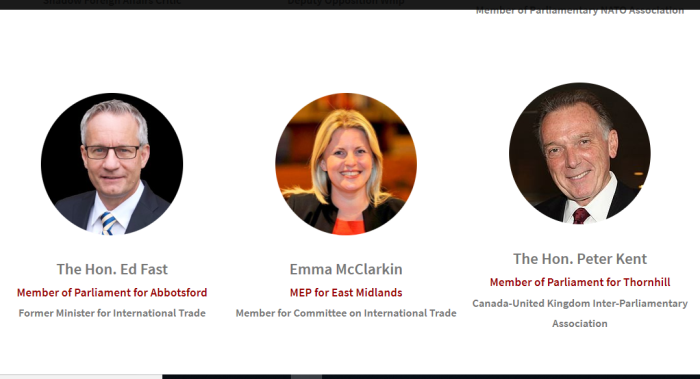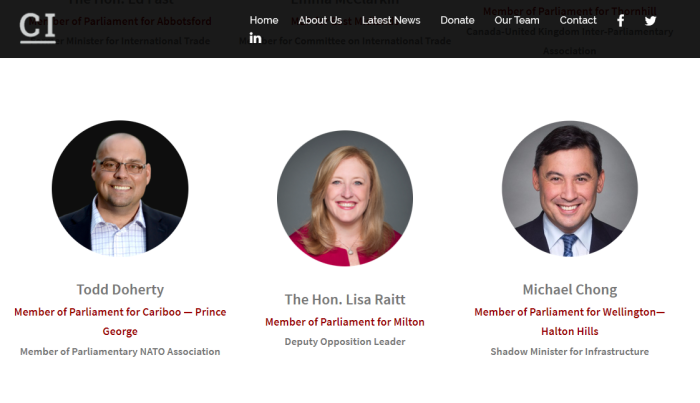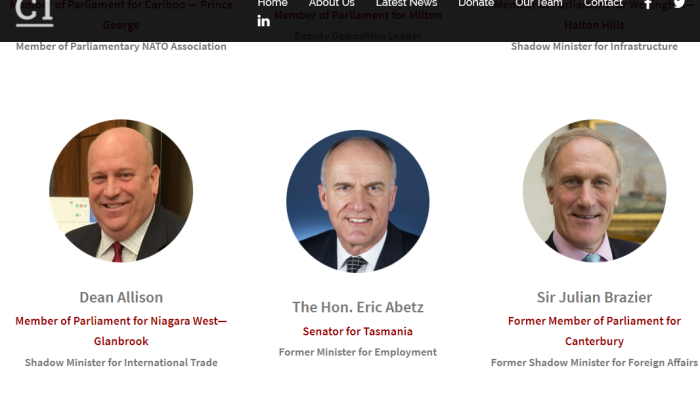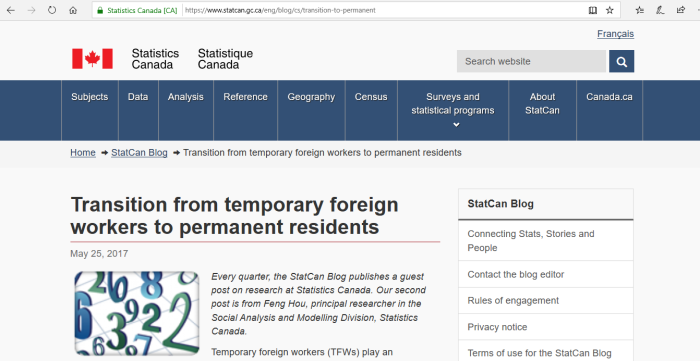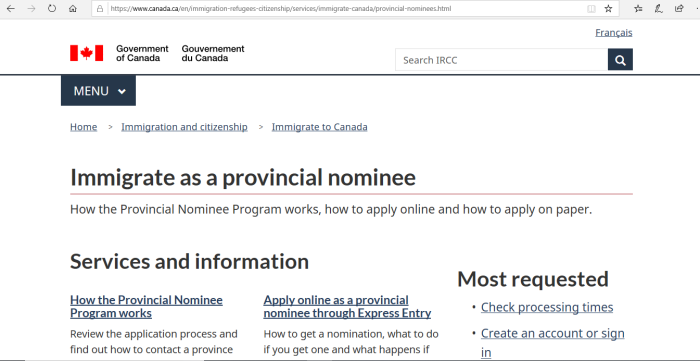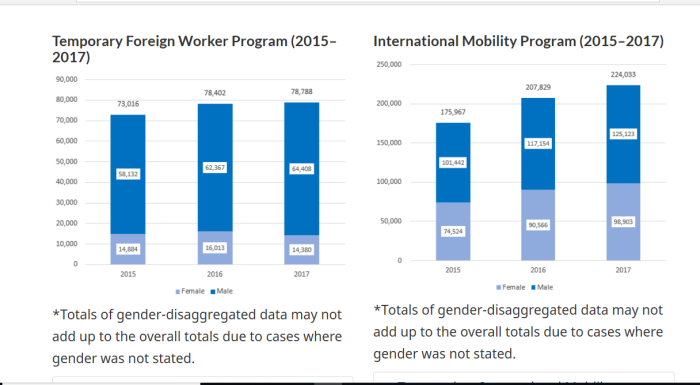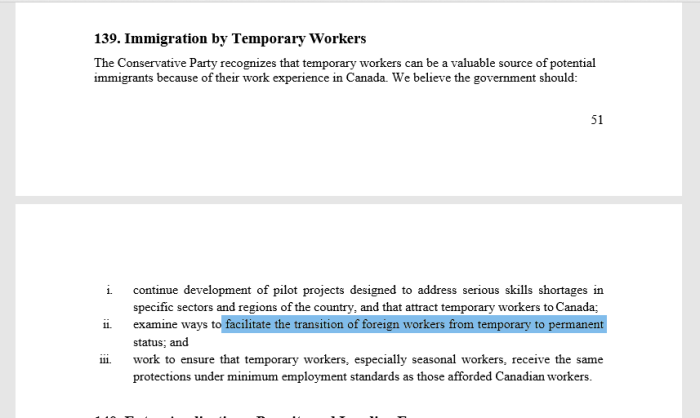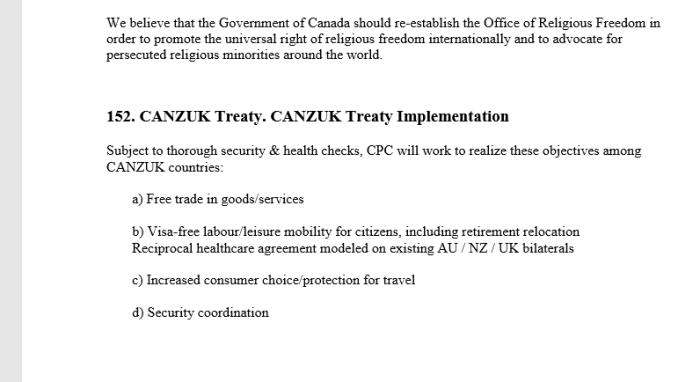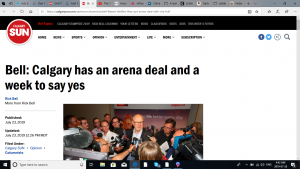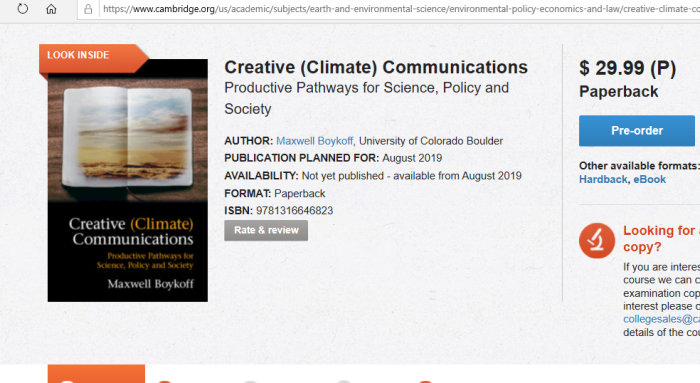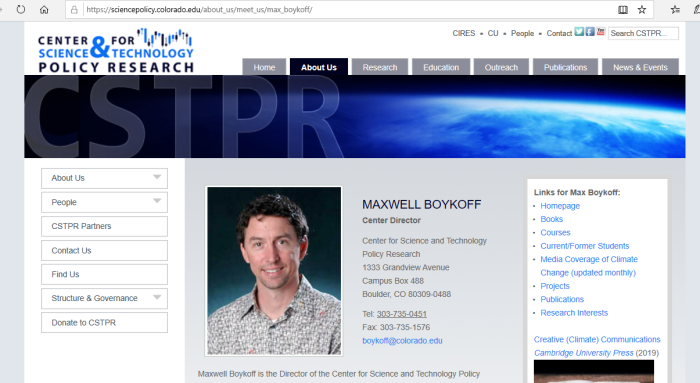(Temporary Foreign Workers can become Permanent Residents)
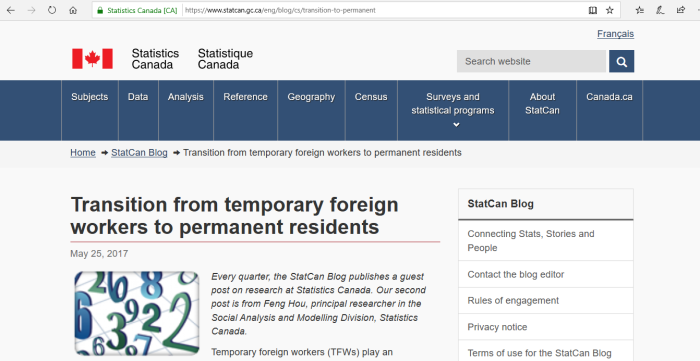
(One option for college, university graduates is the Provincial Nominee Program. Its name varies slightly by Province)
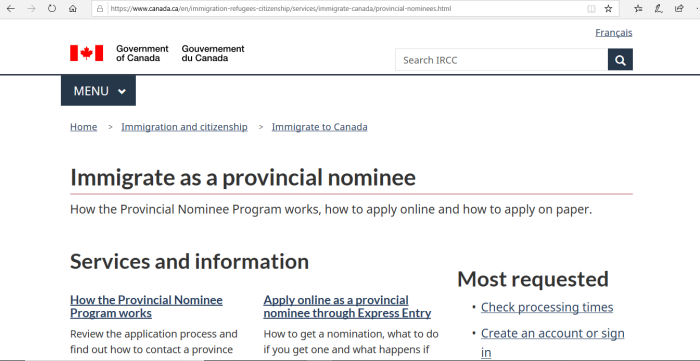
(Brooks, AB, and cheap foreign labour)
1. Mass LEGAL Immigration In Canada
Despite what many think, LEGAL immigration into Canada is actually a much larger threat than illegal aliens, given the true scale of the replacement that is happening. What was founded as a European (British) colony is becoming unrecognizable due to forced demographic changes. There are also social, economic, environmental and voting changes to consider. See this Canadian series, and the UN programs for more detail. Politicians, the media, and so-called “experts” have no interest in coming clean on this.
CLICK HERE, for UN Genocide Prevention/Punishment Convention.
CLICK HERE, for Barcelona Declaration & Kalergi Plan.
CLICK HERE, for UN Kalergi Plan (population replacement).
CLICK HERE, for UN replacement efforts since 1974.
CLICK HERE, for tracing steps of UN replacement agenda.
Note: If there are errors in calculating the totals, please speak up. Information is of no use to the public if it isn’t accurate.
2. Important Links
(1) https://canucklaw.ca/cpc-endorses-globalism-canzuk-birth-tourism-citizenship-for-refugees-islam/
(2) https://www.immigroup.com/news/top-7-fastest-and-cheapest-ways-immigrate-canada
(3) http://archive.is/Sudgr
(4) https://www.canada.ca/en/immigration-refugees-citizenship/services/immigrate-canada/rural-northern-immigration-pilot/about.html
(5) http://archive.is/Sbub5
(6) https://www.cbc.ca/news/canada/windsor/leamington-growers-temporary-residency-1.5222443
(7) http://archive.is/LIhVK
(8) https://moving2canada.com/study-in-canada/
(9) http://archive.is/7Ppmu
(10) https://www.canada.ca/en/immigration-refugees-citizenship/corporate/publications-manuals/fact-sheet-temporary-foreign-worker-program.html
(11) http://archive.is/YCxhQ
(12) https://www.canada.ca/en/immigration-refugees-citizenship/corporate/publications-manuals/operational-bulletins-manuals/temporary-residents/foreign-workers/eligibility/open.html
(13) http://archive.is/AnuBK
(14) https://www.cbc.ca/news/politics/hussen-migrant-workers-abuse-1.5157114
(15) http://archive.is/p8J8H
(16) https://www.canada.ca/en/immigration-refugees-citizenship/services/immigrate-canada/family-sponsorship/fees-permits-victims.html
(17) http://archive.is/jPoeh
(18) https://canucklaw.ca/cbc-propaganda-3-ignoring-the-root-cause-of-domestic-violence/
(19) conservative.party.of.canada.policy.declaration
2004.annual.immigration.report.to.parliament
2005.annual.immigration.report.to.parliament
2006.annual.immigration.report.to.parliament
2007.annual.immigration.report.to.parliament
2008.annual.immigration.report.to.parliament
2009.annual.immigration.report.to.parliament
2010.annual.immigration.report.to.parliament
2011.annual.immigration.report.to.parliament
2012.annual.immigration.report.to.parliament
2013.annual.immigration.report.to.parliament
2014.annual.immigration.report.to.parliament
2015.annual.immigration.report.to.parliament
2016.annual.immigration.report.to.parliament
2017.annual.immigration.report.to.parliament
2018.annual.immigration.report.to.parliament
2019.annual.immigration.report.to.parliament
3. The Rule From Before
If a Conservative or Nationalist isn’t willing to talk about the FULL SCALE of immigration into the country, there’s no reason to trust anything they say on the subject.
Disclaimer: If any program has been missed, please contact and it will be promptly added.
4. Faith Goldy Drops Truth Bombs
https://www.youtube.com/watch?v=xm-cqB2jE9k
Faith Goldy does a livestream here, discussing the full scope of mass migration into Canada. She correctly points out that public debate is limited (Permanent + Refugees), while other categories are not discussed in the political sphere. She also points out the elephant in the room: politicians focus on replacing citizens with foreigners rather than promoting higher birth rates within Canada. The name “replacement migration” fits perfectly. Great video. Watch and subscribe.
Honourable mentions: YouTuber Rants Derek also points out some hard truths. (See 1:10-1:50). Another channel worth subscribing too, as he covers difficult and important topics. Also see this article by Spencer Fernando.
5. National Citizens Alliance Addresses It
The video is of NCA founder, Stephen Garvey. It’s nice to finally have a political party in Canada address the problem in an honest manner. No low-balling here.
6. Totals From Before
(From the 2018 Report to Parliament)
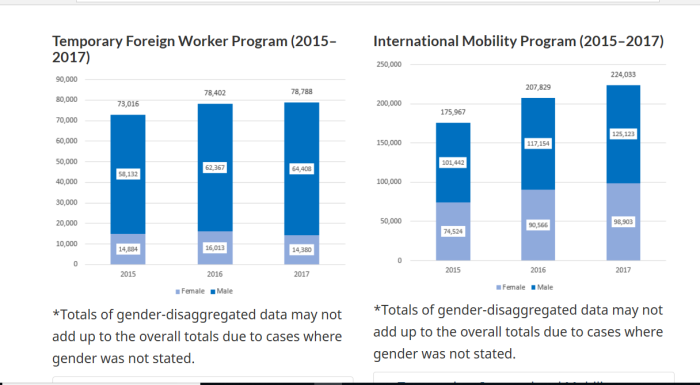
(From the 2018 Report to Parliament)
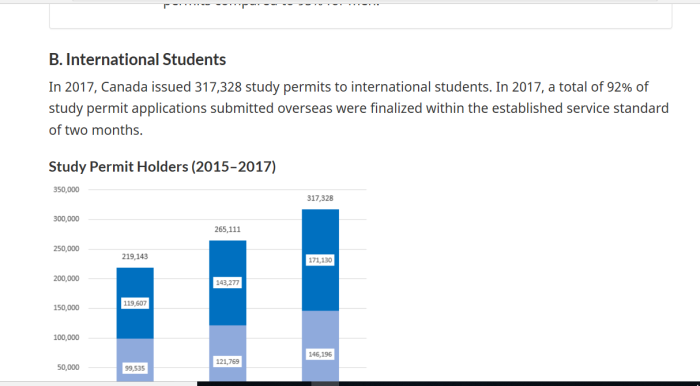
Source: 2018 Report To Parliament
Also worth noting, 525,000 people got their citizenship in a 12 month period. This is despite the “backlog”, and only taking ~350,000 people into Canada.
Source: StatsCan population data.
| Year | TFW | Int Mobility | Student |
|---|---|---|---|
| 2015 | 73,016 | 175,967 | 218,147 |
| 2016 | 78,402 | 207,829 | 265,111 |
| 2017 | 78,788 | 224,033 | 317,328 |
Remember: This table only covers “temporary” entrants (workers and students), and is outside what politicians typically declare. While these programs are officially marketed as temporary, there are a number of avenues to stay longer and become a permanent resident.
Now, combine the 2017 “temporary” totals with the approximately 350,000 permanent and refugees that the government declares and you get this. Note: the report itself lists slightly lower actual entry (330K) under Permanent and Refugee totals, but 350K is the stated goal.
350,000 (Permanent + Refugee)
+78,788 (Temporary Foreign Workers)
+224,033 (International Mobility)
+317,328 (Student Visas)
970,149 (total)
However, the only heading being debated is the 350K at the top (permanent and refugee). Very disingenuous to not include the entire amount.
Canadians are deceived, as most are likely not aware of the actual intake. The P+R categories only represent about a third of total immigration. And this doesn’t even cover the illegal entries.
7. Temporary Foreign Worker Program
This should be self explanatory, but let’s get some more information on this. Is temporary really temporary? Not really. From the factsheet which is freely available online.
Advantages to Employers
For employers who have been unable to recruit Canadian citizens or permanent residents for job openings, the TFWP makes it possible to hire workers from abroad. Employers might also find a qualified foreign worker already in Canada, such as a foreign worker who is about to complete a job contract with another employer or a foreign national holding an open work permit that allows the employee to work for any employer in Canada.
While most temporary foreign workers will be hired to address a specific, short-term labour need, some temporary foreign workers who initially came to fill a temporary vacancy can transition to permanent residence if they meet certain requirements. For example, the Canadian Experience Class is open to foreign nationals who have been working full-time in Canada as trades people or in managerial or professional occupations and meet certain other requirements. Other foreign workers may qualify through the Provincial Nominee Program for permanent residence in Canada. These routes exist to ensure that workers who have shown that their skills are in continuing demand and that they have already adapted well to life in Canada can build a future here.
Source is here.
While this is called the “Temporary” Foreign Worker Program, the wording makes it very clear. The pathway to Permanent Resident is built in intentionally. This absolutely is a pathway to PR, and from there, citizenship. Extremely misleading to the public.
Not only that, there is no requirement to attempt to hire a Canadian worker. An employer can just hire a foreigner who happens to already be in Canada.
8. Agriculture Specific PR Path
Thousands of temporary foreign workers in greenhouses, mushroom farms and meat processing plants will soon be given a path to permanent residency.
Under the three-year “Agri-Food Immigration Pilot,” 2,750 workers and their families will be able to apply for permanent residency each year. The federal government says it could mean up to 16,500 new permanent residents.
From this article, a pilot program set up to fast track people in agriculture to Permanent Resident status. It was created specifically for this industry.
Working in meat processing plants? Kind of like how things went in Brooks, Alberta, after Jason (Bilderberg) Kenney brought in cheap foreign labour? Those Somali Muslims?
Another boutique program to greenlight permanent residence to people coming into Canada.
9. Northern And Rural Program
The Rural and Northern Immigration Pilot is a community-driven program. It’s designed to spread the benefits of economic immigration to smaller communities by creating a path to permanent residence for skilled foreign workers who want to work and live in 1 of the participating communities.
This new initiative aims to get more immigration to smaller towns under the pretext of “economic development”.
In reality, it will likely make such small towns unrecognizable by inducing rapid demographic shifts. Want to get away from all the diversity in big cities? Now you won’t be able to, bigot.
Take for example, Brooks, AB, which was culturally enriched by then Immigration Minister Jason Kenney bringing in Somali Muslims to fill jobs at a meat packing plant.
10. Student Visas
Information is from here. Rather than rehashing it, here is the actual quote. It outlines a number of benefits to studying in Canada. They include
(1) International students in Canada can work for up to 20 hours per week during semester, and on a full-time basis during school breaks.
(2) The tuition fees to study in Canada, even for international students, are usually lower than in other countries.
(3) The spouse or common-law partner of an international student may accompany the student in Canada. Not only that, spouses and partners may obtain an open work permit, allowing them to work any hours they wish and for any employer.
(4) International students in Canada can bring their children to Canada, and the kids can attend one of Canada’s public elementary or secondary schools without needing their own study permit.
(5) Canada’s largest cities are ranked among the best student cities by the QS World University Rankings, with Montreal ranked the best student city in the world and Vancouver and Toronto not far behind.
Graduates can work in Canada for up to three years on an open post-graduation work permit (see below under ‘Earn’).
(6) Rather than closing the door on graduates who complete their studies in Canada or making things incredibly difficult, as some countries may do, Canada actively sets out to provide permanent residence pathways to students and graduates (see below under ‘Stay’).
(7) Canada’s liberal citizenship naturalization process allows international students to count time spent on a study permit towards citizenship residency days requirements.
The Provincial Nominee Program is a common, but not only, option for graduates looking to stay.
Not much I can add to this. Comparatively lax standards, and easy to move to Permanent Residence. Upon graduation, you are given 3 years. Also your time studying counts.
Canada’s international student population is surging, even as domestic student count is falling. Why is this? Different motivations. More and more Canadians realize that university, (and to a degree college), is useless for employment. However, foreigners looking to immigrate to Canada see college as a stepping stone to do so.
Will all students stay after graduating? No, but a lot will.
11. Students, Bring Your Families
This was alluded to earlier. Canada not only takes in lots of students, but allows them to bring a spouse and children. For everyone, time in Canada counts towards obtaining permanent residency.
Not just one person gaining time towards Permanent Resident status, but the family. Let that sink in.
In 2017, Canada issued 317,000 student visas. Theoretically, every one of those people would be able to bring a spouse and children, if they had any.
It is not the education that is the real value. Even STEM degrees don’t guarantee employment. Rather, student visas are used as a stepping stone to permanent immigration into Canada.
12. International Mobility Programme
Also known as the Youth Mobility Program, this allows foreign workers to come to Canada for 1-2 years for casual work, schooling, or travel. There is an age limit of 35. In 2017, Canada admitted 224,000 people under the International Mobility Programme
While this is sold to the public as a “temporary” visa, that is not the full story. Is a person is resourceful, they will likely be able to find another way to stay in the country. This would be by lining up another visa, making further education arrangements, getting married, or pursuing another method.
There absolutely are ways around the “temporary” nature.
True, many people will go back to their home countries after that 1 or 2 year period is up. But it is also true that creative people can get around the intent of the program.
13. Allegations Of Domestic Violence
From an earlier article on domestic violence:
Research by her organization found some shelter providers in Calgary found up to 40 per cent of women seeking help were visible Muslims. Many are new immigrants and refugees and can be socially isolated with few friends and no family in Canada.
And what does that translate to overall? Calgary’s Muslim population is about 3% of Calgary’s overall population. So let’s do an apples to apples comparison.
Let’s do some math: suppose you have a city with 1,000,000 citizens, which would mean 30,000 muslims, and 970,000 non-muslims. Now, suppose there are 1,000 incidents of domestic violence in a year. That means that 400 of those incidents would involve muslims, and 600 would involve non-muslims.
Now, those 30,000 muslims would have been involved in 400 domestic violence incidents, or about 1333 per 100,000 people. The 970,000 non-muslims would have been involved in 600 domestic violence incidents or about 62 per 100,000 people. Comparing the two groups of 1333 and 62 per 100,000, we divide and (1333/62=21.5). We get about a magnitude of 21 or 22.
That’s right. Per capita (assuming the research is correct), Muslim families engage in domestic violence at more than 20 times the rate of non-Muslim families. Let that sink in.
That is likely to get a lot worse, though not for the reasons you might be thinking.
Beginning July 26, newcomers who are victims of domestic violence can apply for a free temporary resident permit that will give them legal immigration status in Canada. That will include a work permit and health-care coverage. In “urgent” situations of family violence, the government will expedite the process by allowing people to apply for permanent residence on humanitarian and compassionate grounds.
According to the CBC, people leaving domestic abuse situations can apply for a temporary residence permit. That can then become permanent residence based on compassionate grounds.
Get ready for more claims. Furthermore, it doesn’t specifically limit one spouse per person.
14. CANZUK Will Erase Borders
(The CPC strongly supports CANZUK)
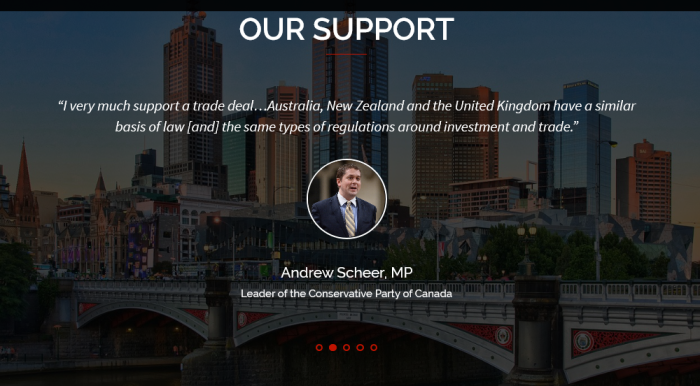
(CPC policy is to give temporary workers permanent residence status wherever it is feasible. From Page 52 of policy guidelines)
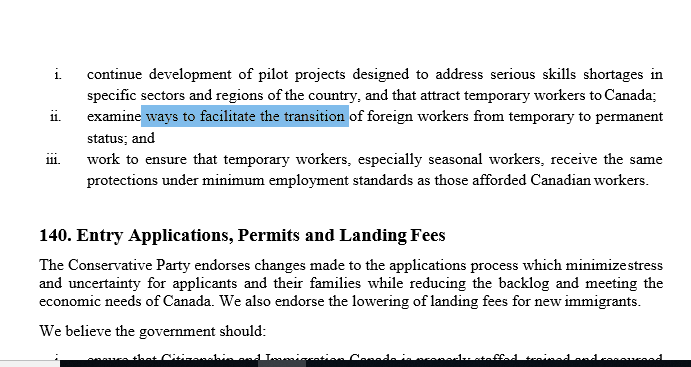
The Conservative Party of Canada fully endorses CANZUK. This is the Canada, Australia, New Zealand, UK pact which eliminates trade and movement barriers between countries. Plainly said, it erases the borders. While this seems harmless, it must be noted that the agreement explicitly states that other nations may be added later.
Using political, social and economic analysis, CANZUK International’s Research Associate, Luke Fortmann, explores the future possibilities of other countries joining a free movement and trade alliance with Canada, Australia, New Zealand and the United Kingdom.
A useful way to begin is by taking a look at the CANZUK countries’ dependent territories, such as Christmas Island, the Cook Islands and Anguilla, for example, which are dependencies of Australia, New Zealand, and the UK, respectively, as well as the UK’s Crown dependencies (Guernsey, Jersey, and the Isle of Man).
Each area would naturally become full members of the new group along with the nations to which they are related. Some advocates claim that these small islands, and their generally sparse populations, are currently under-utilised, and that a CANZUK alliance would offer a tremendous opportunity for their communities to acquire a far more extensive set of rights by becoming equal partners in a union, while shaking off their somewhat colonial tint.
Widening our scope, we arrive at the Commonwealth realms. These realms are sovereign states who are members of the Commonwealth and who currently share Queen Elizabeth II as their monarch, of which, there are 16 including the CANZUK countries.
Additionally, it’s been noted that, particularly concerning the more populous realms such as Jamaica and Papua New Guinea, immediate free movement would generate a rush of emigrants who may be poorly equipped for employment in the CANZUK countries; while at the same time enticing the more skilled minority away from their homeland in search of better-paying positions in the richer nations, ridding schools and hospitals of vital staff.
Instinctively, the next place to turn is to the Commonwealth as a whole. Broadening our vision in this way does present some of the same issues, as well as some new ones. A complete Commonwealth union would of course be dominated by India, with a population of over 1.3 billion, along with Pakistan (193 million), Nigeria (186 million), and Bangladesh (163 million) who would dwarf the CANZUK countries in terms of inhabitants, rendering them merely minor players.
Does that scare you yet? India, Pakistan, Nigeria and Bangladesh have a combined population of almost 2 billion people. Imagine erasing the border between them and Canada. It would be a population overrun, if even 10% of those people came here.
What does the (potential) CANZUK list look like?
- Anguilla
- Antigua
- Australia
- Bahamas
- Bangladesh
- Barbados
- Belize
- Canada
- Christmas Island
- Cook Islands
- Grenada
- Guernsey
- India
- Isle of Mann
- Jamaica
- Jersey
- New Zealand
- Nigeria
- Pakistan
- Papua New Guinea
- Saint Lucia
- Saint Vincent and the Grenadines
- Solomon Island
- Tuvalu
- United Kingdom
CANZUK is a trojan horse. It is “marketed” to the public as a loosening of borders between only Canada, Australia, New Zealand and the UK. However, the group makes it explicit that other countries joining is entirely possible.
If, for example 50 million Indians were to come to Canada (just 4% of their population), Canada would double in size, and the voting results would be altered forever. This is demographic replacement.
15. Global Migration Compact Implemented

While officially “non-binding”, that is not really the case. They can become the basis for court decisions at later dates. For reviews, see here, see here, and see here.
This was signed by the Liberals on December 10, 2018. While the People’s Party, and now the Conservative Party, claim to oppose the Compact, how serious are they? Both “conservative” parties support mass migration and give little thought to protectionist measures.
“Conservative” parties value immigration for growth in terms of population and GDP. They care little, if at all, of ensuring cultural compatibility. Furthermore, conservatives never focus on boosting births within their nations. It is always more immigration.
16. Focus On Raising Local Birthrates
(Russia on boosting birthrates)
(Hungary: No income tax for women with 4+ children)
Thailand is encouraging more children. Italy is doing a land giveaway for married couples.
Why do Canada’s politicians not do this? Why is the solution always immigration? The exact methods and incentives are totally up for debate, sure. But governments should be encouraging their own citizens to have more children if they need more growth, or even just to reverse a decline.
Guess what, when you try to replace with migration, you eventually replace your population. Having more Canadian children here, and raising them as Canadians is far preferable to importing replacement cultures.
17. Canadians Need To Know The Truth
Yes, some of these topics have been covered before. But the truth still needs to be told, and needs to be made clear.
Canada’s politicians are lying about the scale of mass migration and replacement migration in Canada. The “debate” is limited to a few categories, while others are ignored. In fact, it is those “ignored” topics that actually comprise the bulk of immigration in Canada
Canada’s annual immigration rate is not around 300,000 to 350,000. All told, it is more like a million a year. The public is lied to about this.
Not only is the full scale lied about, but globalist politicians in Canada want to erase borders with agreements like CANZUK and the Global Migration Compact.
If more people are needed, then they should come from within. Boost the birthrate of Canadians, and grow the country organically.
WE NEED CANADIAN CHILDREN, NOT REPLACEMENT MIGRATION
Please spread the truth, and make other people aware.

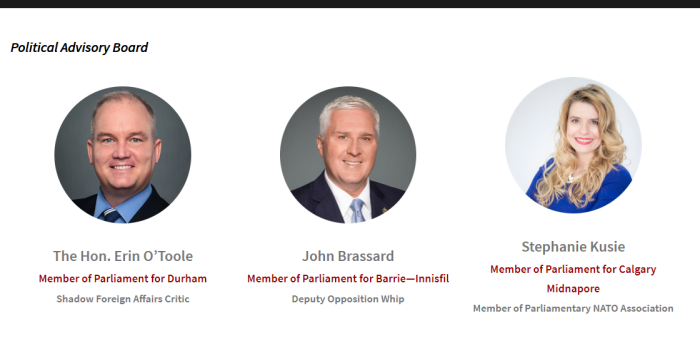 >
>